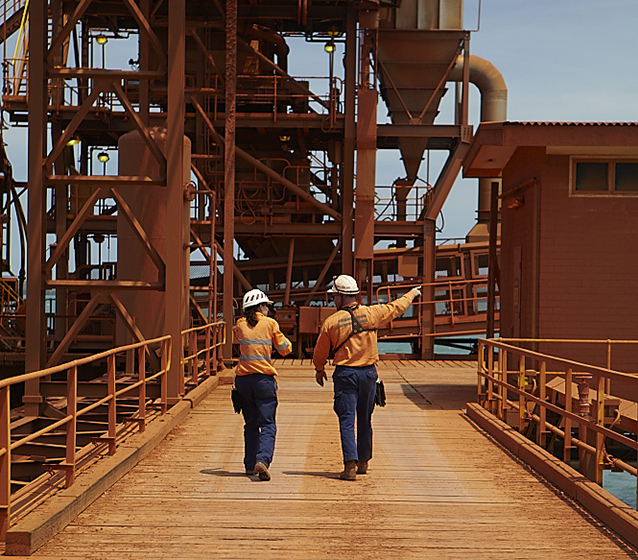Mining Equipment for Outer Space Reaching Maturity
When Canadian Astronaut Chris Hadfield said recently that he saw thefuture of mining as somethingout of this world, some people thought he was using a metaphor. He was not. A few companies, such as Neptec Design Group of Ottawa and Sudbury-based Northern Centre for Advanced Technology (NORCAT), are building and testing technologies from docking sensors to the use of lasers in a radar-like way, in order to allow the mining industry to go beyond the limits of our atmosphere.
“It sounds sort of crazy, but there are enormous mineral resources beyond our own atmosphere,” says Hadfield. “Eventually e will mine them. We just haven’t developed the technology.”
The idea does not sound so crazy to Dale Boucher, director of innovation at NORCAT, a Canadian non-profit organization based in Sudbury, Ontario, that has been building drilling and mining technologies specifically for the space industry since 1999.
Since January this year, NORCAT staff has been in Hawaii, field-testing six units designed for mining operations on the moon.
The test involved the use of a high-intelligence system from
the University of Toronto Institute for Aerspace Studies (UTIAS)called Multi Agent, teaming as a master controller over the rover navigation system.
Each rover was equipped with one of these intelligence suites as well as three degrees of freedom plow. The units were then given limits of operation and toldto discover how to build a landing pad that was level, 15 m in diameter and had a one- metre berm on the east side. A Neptec TriDAR (Triangulating Lidar) was used to provide situational data to each rover. The humans then stood back and watched. Twenty days later, the task was completed without human intervention, other than servicing the rovers with battery changes and grease.
The Juno Rovers—about 1 metrex1metre in size and 30 centimetres high — look like remote-controlled toys. While they are not built from Lego blocks, the u-shaped vehicles do share something with the children’s toy. Their component parts, set in the middle of the “u,” can be changed quickly. A scoop can be switched with drills or a ground-penetrating radar system or a prospecting kit.
These rovers, built by Ontario Drive & Gear, will be integral in sustaining life on the moon. They can smooth moon dust into flat landing areas, scoop up rock and carry it to a type of oven, which will cook out any oxygen and water in the rock for humans to use, and also, perhaps, help with the establishment of a permanent station under the moon’s surface.
NORCAT has established a reputation as a centre of expertise in mining technology for space exploration, having won a series of contracts from both the Canadian Space Agency and NASA since 2002, including several contracts for the development of a drill capable of penetrating the lunar and Martian surfaces in search of water.
Now the non-profit technology innovation centre is leading the rovers testing mission — with participation from the German Aerospace Center (DLR) and Space Weather Canada — to determine whether they can be sent to the moon and, later, hopefully, Mars.
The tests provided valuable information about systems that could support an extraterrestrial or planetary exploration mission by minimizing the amount of water and oxygen that must be transported from Earth.
“There’s no other place on Earth like this Hawaiian crater,” explains Boucher. “This site was chosen because of its similarity to the Apollo 16 landing site. Its sediment is the closest you’ll find to lunar regolith, or moon dust.”
NORCAT’s tests were primarily focused on in-situ resource utilization (ISRU), which means using the moon’s natural resources to sustain human visitors. For example, landing one litre of water on the moon would cost a space agency $100,000 a bottle. Therefore, it makes sense to use what’s in the surroundinglandscape.
In Hawaii, the researchers were able to make oxygen out of the rocks.
“It means that you can really reduce the cost of any robotic or human mission with in-situ resource utilization,” Boucher says.
The centre invented its own simulated lunar regolith called Chenobi that it sells for $40,000 a ton. However, like moon dust, it is made up of tiny particles shaped like fish hooks that can do a lot of damage if inhaled, so it is difficult to work with.
Neptec was also ini Hawaii to test its new multi-use robotic platform, which can be retrofitted for different purposesonce on the moon. Neptec is best known for its “laser camera system” which has flown with every shuttle mission since the Columbia disaster to check for damage to the external tiles.
Autonomous operation
NORCAT subcontracted the UTIAS to apply multi-agent teaming technology designed to allow two or more robots to work co-operatively.
XiphosTechnologies, another NORCAT partner, has developed a lunar link emulator designed to simulate a radio connection with the moon’s South Pole, the likely destination of a future lunar mission.
Future R&D efforts are expected to focus on developing a way to swap the payload autonomously.
NORCAT’s biggest contracts are coming in the following months and they will last until the mission leaves Earth, 2015 being the earliest possible take-off for its rovers to the moon.

Click here for full list of links:
{{ commodity.name }}
{{ post.title }}
{{ post.date }}



Comments